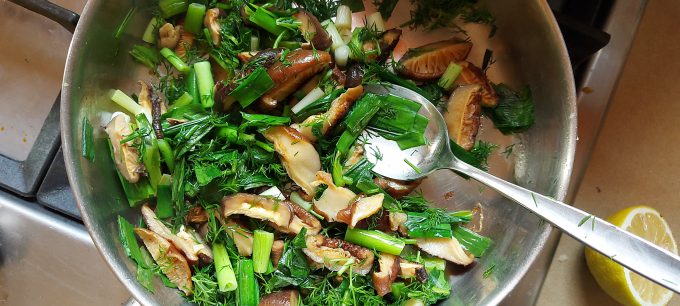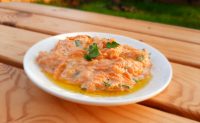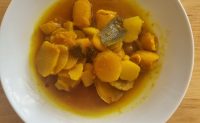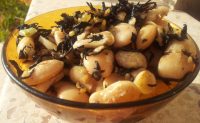Shiitake Recipe with Leeks and Dill
Eyal Shpringer

A flavorful vegetable dish that can be eaten as it is, on top of a slice of bread, or as a seasoning for cereal dishes. The Shiitake recipe with leeks and dill is rich with end-of-winter and early spring aromas that characterize mushrooms and onions that have just come from the ground.
Ingredients (for two small servings)
20 fresh or water-soaked shiitake mushrooms
One leek cut into thin slices
1/2 bundle of chopped dill
Four chopped garlic cloves
Two tablespoons of olive oil
A pinch of black pepper
1/2 teaspoon salt
Preparation:
Fry the garlic and leeks lightly in olive oil until soft.
Add the shiitake slices, mix, and cover with a lid.
Cook on small-medium heat for about 10 minutes.
Mix in the dill, pepper, and salt and serve hot or at room temperature.
Shiitake Recipe with Leeks and Dill from the traditional medical point of view
The recipe’s ingredients, such as mushrooms and leeks, are associated with early spring: Both emphasize Qi movement.
As a vegetable from the onion family, leeks exhibit a sweet and spicy taste. Its direction is upwards and outwards. Moreover, leeks encourage blood and bowel movements and have a drying effect if phlegm is present. Leeks also contain immune-supporting and regulating substances such as the flavonoid Kaempferol (1), a powerful antioxidant. They also have inulin fibers, a prebiotic substrate for gastrointestinal bacteria supporting the immune system (2).
Shiitake mushrooms also represent attributes of spring, such as spreading and growth, but their quality is cool-neutral. These mushrooms help cope with excess, whether a rotting tree or excess sugar and cholesterol.
Macrobiotics recommend shiitake to balance prolonged eating of animal protein. In Chinese medicine, they are defined as a qi-boosting food. Additionally, Shiitake mushrooms contain many immune-supporting components, including beta-glucans and germanium (3). The mushroom’s fibers (mycelium) also serve as a prebiotic substrate for gut bacteria.
The dill presented in the dish, a member of the Apiaceae (Umbelliferae) family, reduces intestinal fermentation and gases caused by the fibers found in onions and mushrooms and the fructose sugar found in onions.
This recipe may be integrated (following appropriate differential diagnosis) into a nutritional protocol for conditions such as immune weakness, allergy, hypertension, high cholesterol, or atherosclerosis.
Eyal Shpringer, A Chinese medicine practitioner and a clinical herbalist specializing in Chinese nutrition and traditional nutritional approaches. Eyal holds a master’s degree in research of East Asian medicines. Since 2007 he has been teaching a postgraduate training program in Chinese and oriental nutrition according to the TEF method and other courses and workshops for practitioners. Eyal co-authored the bestselling book Cooking for Life: A Traditional Nutrition Cookbook for Cancer Patients (Hebrew).
Did you find the recipe interesting? Do you want to continue studying with me?
You are invited to join me on my Instagram page and the Traditional Nutrition and Medicine Facebook group.
References
- Silvia T-S, Denev P, Ribarova F. Flavonoids in Foods and Their Role in Healthy Nutrition – ScienceDirect. https://www.sciencedirect.com/science/article/pii/B9780128114407000077. Accessed December 29, 2020.
- Flamm G, Glinsmann W, Kritchevsky D, Prosky L, Roberfroid M. Inulin and oligofructose as dietary fiber: A review of the evidence. Crit Rev Food Sci Nutr. 2001;41(5):353-362. doi:10.1080/20014091091841
- Vetvicka V, Vetvickova J. Immune-enhancing effects of Maitake (Grifola frondosa) and Shiitake (Lentinula edodes) extracts. Ann Transl Med. 2014;2(2):14. doi:10.3978/j.issn.2305-5839.2014.01.05


